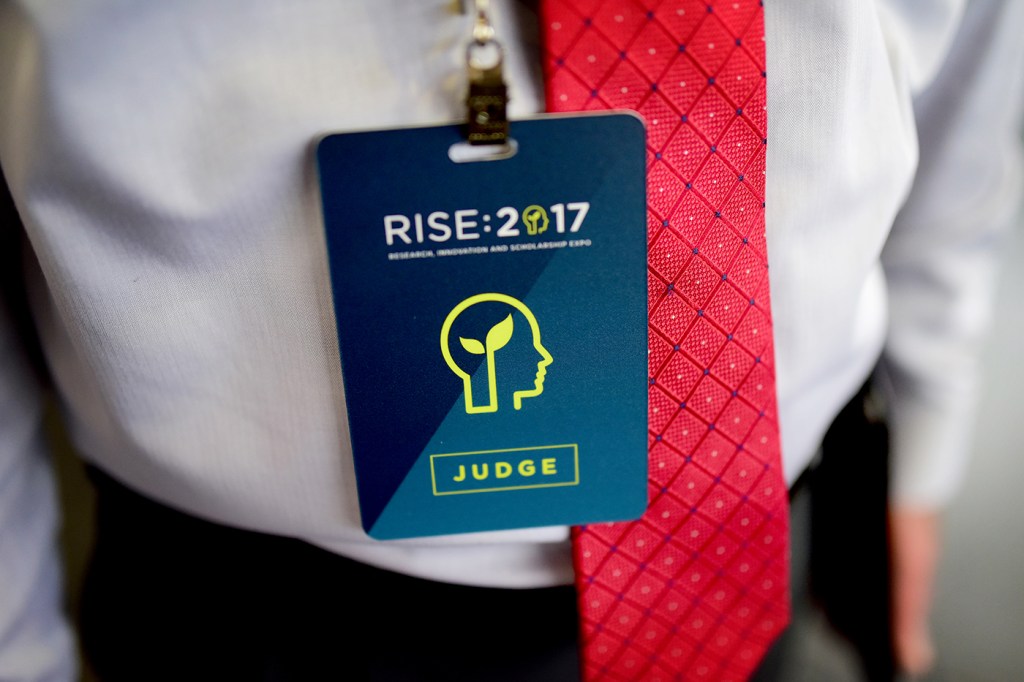What makes a winner?

More than 120 judges from industry and academia circulate among the 400-plus solution-oriented research projects on display at RISE:2017. Intently, they listen to the presenters, ask questions, evaluate the poster contents and designs.
Each carries an iPad with an electronic rubric that rates the displayed innovations in categories from originality to significance and impact to the overall presentation.
We wondered: In addition to the issued guidelines, what drives their decision-making? Here is a sample of responses.
Kevin Papierski, senior designer, National Amusements, Inc.
“I am a graphic designer, and so first and foremost I look for clarity: What are you trying to tell me? I want to see how the researchers take these brilliant ideas and distill them into something that can be communicated clearly, avoiding information overload.”
Greg Dalle-Molle, director of operations, Northeastern University Center for Entrepreneurship Education
“Some researchers have developed specific products, others have a specific value proposition. I am most interested in understanding what is special about the technology and how it applies to people and businesses.”
Michael Draper, senior director, Sanofi, a multinational pharmaceutical company
“I’m probably more focused than some on application-oriented innovations. I want to see something that is not only innovative but that also has a direct application. Sometimes that is a commercial application, other times it is furthering a societal value. In other words: Innovative ideas acted on and implemented.”
Susan Watts, research contracts officer, Office of Research Administration and Finance, Northeastern University
“I am not a technical wizard. I look for passion. I want to be able to see that the presenter can speak in the vernacular and approach those not in the field, translate the significance of the research. I want to see its degree of applicability, what impact it can have.”




